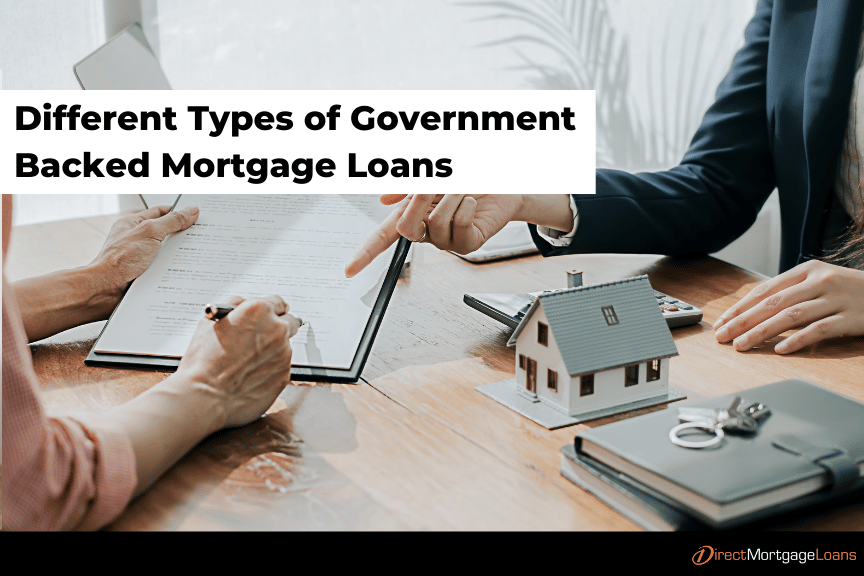Conventional Mortgage Loans: Your Guide to Traditional Home Financing
Conventional Mortgage Loans: Your Guide to Traditional Home Financing
Blog Article
The Essential Aspects to Take Into Consideration When Picking Between Fixed-Rate and Variable-rate Mortgage Lendings
When examining mortgage alternatives, borrowers deal with a critical choice between adjustable-rate and fixed-rate fundings, each offering distinctive benefits and potential challenges. Key considerations such as rate of interest stability, predictability in monthly settlements, and the ramifications of possible rate modifications can dramatically influence long-term monetary health. Furthermore, comprehending the expected duration of homeownership and the overall cost of borrowing can form one's strategy. As these variables link with private financial situations and take the chance of resistance, the ramifications of this option may not be as straightforward as they appear. What subtleties should be prioritized in this vital decision-making process?
Rate Of Interest Price Stability
When selecting a home mortgage, comprehending rate of interest security is vital for informed decision-making. Rate of interest can dramatically impact the total cost of a home loan, and recognizing the nature of these rates is crucial for customers. Fixed-rate home mortgages offer the advantage of constant monthly payments over the life of the loan, protecting consumers from market fluctuations. This stability makes it possible for homeowners to prepare their funds with greater certainty, as they will certainly not be influenced by rising rate of interest rates.
On the various other hand, variable-rate mortgages (ARMs) start with reduced preliminary prices that may alter regularly based upon market problems. While this can cause reduced settlements originally, it additionally presents unpredictability, as consumers might encounter raised settlements if rates of interest climb. For those taking into consideration an ARM, it is essential to assess the likelihood of price adjustments, the possibility for settlement boosts, and the length of the preliminary fixed-rate period.
Ultimately, the selection in between adjustable-rate and fixed-rate home mortgages depends upon private risk resistance and economic scenarios. Comprehending rates of interest stability assists debtors make informed decisions that straighten with their long-lasting monetary goals.
Month-to-month Repayment Predictability
While customers frequently focus on passion rate stability, the predictability of month-to-month repayments is similarly important in the home mortgage choice process (Conventional mortgage loans). Month-to-month repayment predictability plays a vital role in budgeting and economic planning, as it directly influences a home owner's cash money flow and overall economic health and wellness
Fixed-rate home loans provide a consistent regular monthly payment throughout the life of the finance, allowing debtors to expect and prepare their costs effectively. This security can be particularly helpful for first-time property buyers or those on a fixed earnings, as it removes the uncertainty related to fluctuating repayments.
Conversely, variable-rate mortgages (ARMs) generally include reduced initial repayments that can transform in time, causing possible variability in regular monthly commitments. While initially attractive, this changability can make complex financial planning, specifically if borrowers do not account for future rate modifications.
Possible Rate Changes
In the realm of variable-rate mortgages (ARMs), potential price changes represent a considerable aspect that consumers have to thoroughly think about. Unlike fixed-rate home loans, where the rate of interest price stays unmodified for the life of the loan, ARMs are characterized by fluctuating rate of interest that are tied to market indices. This variability can lead to substantial changes in monthly payments, influencing the consumer's economic preparation and budgeting.
Customers must be mindful of the margin and index utilized to calculate these changes, as they directly affect future rate of interest rates. Furthermore, ARMs frequently consist of caps that limit just how a lot the visit here interest price can increase at each adjustment and over the life of the funding, which can provide some degree of protection versus drastic have a peek at this site price hikes.
Recognizing these potential adjustments is essential for consumers, as they directly influence long-term repayment obligations. As a result, assessing personal economic situations and run the risk of resistance is vital when deciding whether an ARM lines up with one's economic objectives.
Financing Term Considerations
Lending term considerations play a critical role in the decision-making process for borrowers picking in between fixed-rate and adjustable-rate home loans. The length of the lending term considerably impacts month-to-month settlements, rate of interest rates, and overall financial preparation.

Eventually, customers should assess their individual scenarios, financial objectives, and market problems when weighing the effects of financing term options within each mortgage kind.

Total Cost of Loaning
Fixed-rate home mortgages offer predictable month-to-month repayments, as the rate of interest price continues to be constant throughout the funding term. This predictability can lead to reduced total costs, especially in a steady or declining rate of interest price atmosphere.
Alternatively, variable-rate mortgages (ARMs) generally start with lower preliminary prices, leading to minimized ahead of time prices. These prices can raise after a first duration, leading to possibly higher long-lasting costs. Customers should think about the frequency and extent of rate changes, along with the total loan period, to properly examine the monetary ramifications.
Furthermore, the overall cost of loaning incorporates not only rate of interest but also costs and various other connected expenses, such as closing prices and insurance policy (Conventional mortgage loans). As a result, when assessing mortgage alternatives, consumers must carry out a comprehensive expense evaluation over the life of the loan. important source By doing so, they can make an informed choice that lines up with their economic goals and take the chance of tolerance
Conclusion
Interest rate stability and regular monthly settlement predictability are paramount for effective budgeting, while the capacity for rate modifications in ARMs presents economic unpredictability. In addition, the anticipated duration of homeownership and the overall expense of borrowing, including rate of interest prices and linked costs, must align with private monetary conditions and take the chance of resistance.
Trick considerations such as passion rate stability, predictability in monthly repayments, and the implications of prospective rate modifications can substantially affect long-lasting monetary health and wellness. Rate of interest rates can significantly impact the overall price of a home mortgage, and identifying the nature of these prices is necessary for debtors. Unlike fixed-rate home loans, where the rate of interest rate continues to be unmodified for the life of the financing, ARMs are identified by changing rate of interest rates that are linked to market indices. In addition, ARMs commonly include caps that limit just how a lot the interest price can boost at each modification and over the life of the lending, which can provide some degree of security against radical rate hikes.
Passion price stability and month-to-month payment predictability are extremely important for efficient budgeting, while the potential for price modifications in ARMs presents monetary unpredictability.
Report this page